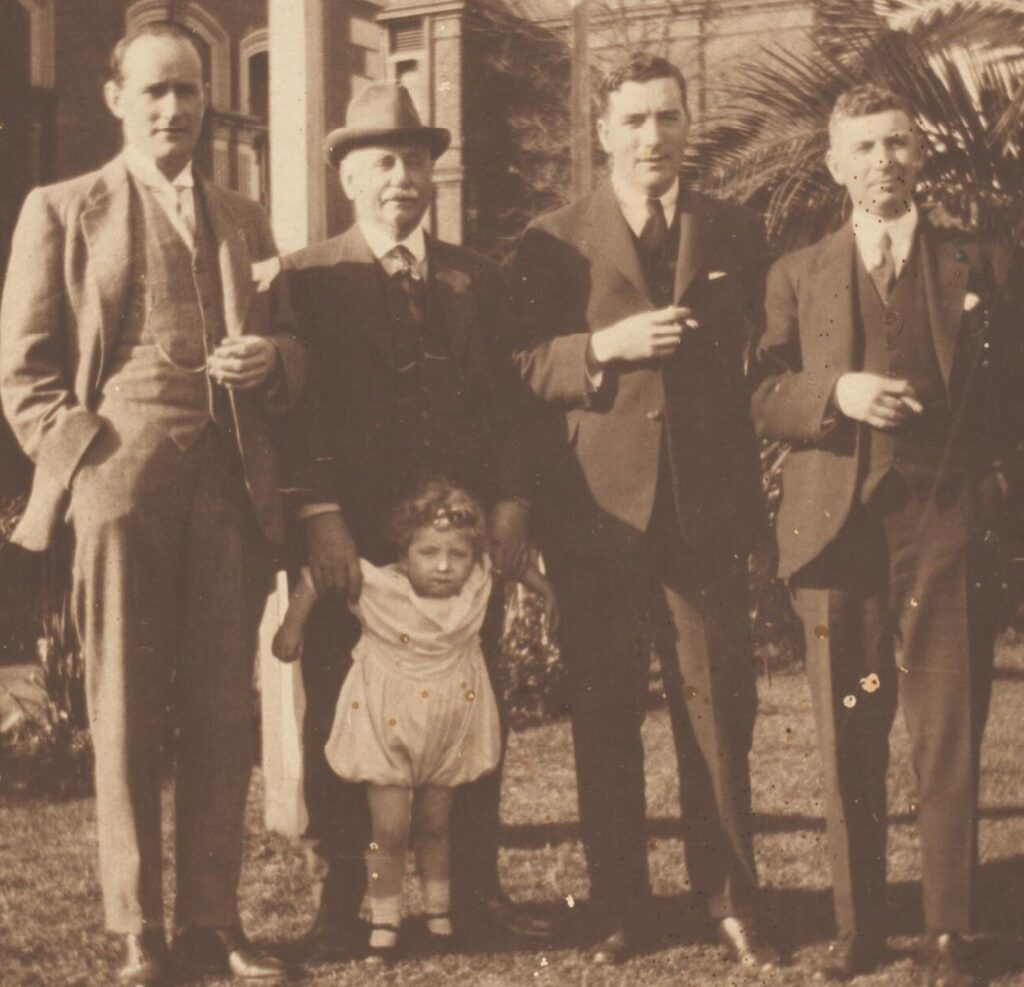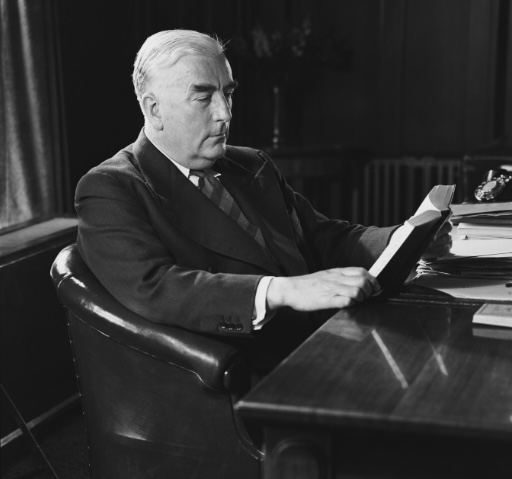On this day, 9 August 1862, James Menzies (Sir Robert’s father and a future Victorian MLA) is born in Ballarat.
James was the son of Robert Menzies, a Scottish seaman who in 1854 at 22 years of age had jumped ship from the vessel Thomas Fieldon in the hope of striking it rich in the Australian gold rush. In 1855 he had married Elizabeth Brand, the daughter of a fife cobbler whom Robert had met on the ship. The two inhabited a tent home beside Ballarat’s Yarrowee Creek, where Robert tried his hand at mining until 1861. By the time James was born, Robert was running a business which sold imported mining machinery. He would die of pneumonia in 1879, leaving James and his two older brothers to serve as the breadwinners for a family of nine children.
James was apprenticed to a Ballarat coach-painter, and when he obtained his articles he demonstrated an entrepreneurial work ethic by convincing his employer to pay him at piece rates rather than giving him a regular wage. He soon saved up enough money to start his own coach-painting business, and befriended Hugh Victor McKay, inventor of the famous ‘Sunshine Harvester’. James painted the first of these machines, and soon found himself employed as the head painter at McKay’s Pheonix Foundry.
In 1889 James would marry Kate Sampson, daughter of the Cornish miner and trade unionist John Sampson. Spurred on by the need to provide for his burgeoning family, James proved himself to be something of a workaholic, frequently ‘collapsing’ when he arrived home from a day’s toil. By the time they had had three children (James 1890, Frank 1892, and Isobel 1893), Kate felt this lifestyle was unsustainable, and convinced James to move to Jeparit, where her brother Sydney owned the general store which he was happy to hand over to focus on editing a newspaper, the Jeparit Leader.
In 1894, the younger Robert was born out the back of the store, a business which ‘survived rather than prospered’. James was apparently ‘too kind’ to be a successful businessman, and frequently gave out generous credit to struggling farmers. This empathy was something of a contrast with his private personality, for in the home James proved to be a strict and often violent disciplinarian, which was certainly not uncommon for men of the era. James’s strict moralism was partly reflected in the fact that he became a lay preacher for the town’s Methodist Church (despite himself being a Presbyterian).
James became a highly prominent figure in the town, serving on the Dimboola Shire Council from 1898, founding a local branch of the Australian Natives’ Association, and becoming heavily involved in the ‘Kyabram Movement’. The latter was a popular political campaign to reduce the size (and therefore the taxpayer’s burden) of government in the immediate aftermath of federation. Among its aims was reducing the number of members of the Victorian Parliament and the number of salaried Ministers, reducing taxation, and easing pressure on interest rates caused by excessive government borrowing. Its slogan was ‘retrenchment, reform and prosperity’ a direct echo of British Liberal Prime Minister William Gladstone’s call for ‘peace, retrenchment and reform’, and the movement would see the creation of a National Citizens Reform League, which soon boasted over 15,000 members.
The implementation of the movement’s goals would be carried out by Premier William Irvine, but not before James threatened to run against Irvine in his seat of Lowan if he did not agree to the movement’s demands. Support for Kyabram indicated that James was on the right of liberal opinion at the time, a position echoed by his brother-in-law Sydney Sampson, who as a Federal MP attacked Alfred Deakin for relying on the support of the Labor Party. David Kemp has noted that there was a large crossover between the Kyabram Movement and Victorian supporters of George Reid’s Free Trade Party, although the movement did not reflect an explicit position on the tariff question.
In 1911, with Irvine having shifted to Federal politics, James would finally run for Lowan as a member of the centre-right ‘People’s Party’, winning the seat with a large majority of 3910 votes versus his opponent’s 2234. Kate had pre-emptively moved to Melbourne in 1909, with James initially staying behind to tend to the business, but by the time of his election the family took up residence in Grey Street East Melbourne. In those days it was not uncommon for rural seats to be represented by MPs who did not live in the electorate, which helped to ensure that they would actually be present whenever Parliament sat.
James’s political platform revolved around advocating for the needs of farmers, developing regional areas, ensuring economy in public expenditure, and opposing the socialistic designs of the Labor Party. Robert would later recall that as an MP his father developed ‘the excellent habit, whenever he heard that his electors were disagreeing with some vote of his in the House, of going straight away to visit them and addressing a public meeting to explain why he thought he was right and the meeting was wrong. His simple and accurate belief was that the first function of a Member of Parliament was to be a man and not a phonograph record, a guide and not a mere follower’. In 1916 James would cross the floor to vote against a Bill that would have mandated the closure of Victoria’s German-speaking public schools – an issue of high relevance to Lowan, which contained an unusually high number of people of German descent.
James was elected unopposed in 1914 and 1917, however in 1920 he faced opposition from a candidate for the fledgling Country Party. During the election campaign, James defended his record in standing up for country interests, particularly as president of the Railways Committee, but he refused to fight for what he considered to be ‘class interests’ – politicians should work for the general good not a sectional good. He was defeated at the poll, and tried unsuccessfully to regain his seat in 1921 and 1924.
Out of office Menzies joined BHP as a statistical officer and tariff adviser. He served for many years as a member of the Council of Agricultural Education, while he also engaged in charity, presiding over a Boys’ Home in Frankston which was eventually named after him. He would pass away in his Kew home on 1 November 1945.
Further Reading:
A.W. Martin, Robert Menzies A Life Volume 1
David Kemp, A Democratic Nation: Identity, Freedom and Equality in Australia 1901-1925
Sign up to our newsletter
Sign up for our monthly newsletter to hear the latest news and receive information about upcoming events.


